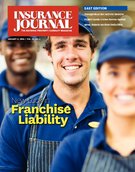Workplace harassment goes far beyond sex and race discrimination.
Today discrimination claims can stem from age, disability, religion, national origin, sexual orientation and gender identity, according to a panel of experts reporting to the U.S. Equal Employment Opportunity Commission’s (EEOC) Select Task Force on the Study of Harassment in the Workplace in a December public meeting.
“Harassment can cover many bases in many different workplaces,” said EEOC Chair Jenny R. Yang. “Equally important, new digital platforms may provide meaningful ways to communicate within workplaces about unacceptable and potentially harassing workplace behaviors.”
With respect to harassment based on disability, the type of harassment often depends on whether the disability is visible, such as quadriplegia, or hidden, such as a psychiatric disability, Lisa Banks, partner in Katz, Marshall & Banks, told the panel. The plaintiff’s side lawyer went on to explain that obvious disabilities may give rise to playground type taunts and mocking; while hidden disabilities may result in intrusive medical questions or gossip and innuendo based on myths, fears and stereotypes.
Zahra Billoo, executive director, Council on American-Islamic Relations (CAIR) for the San Francisco Bay area, told the task force that for many Muslims, current events have only exacerbated the potential for harassment. Even when harassment is not mocking or name-calling, individuals may feel harassed if they are constantly called on to explain the actions of other Muslims or to explain their religion or religious garb.
Tara Borelli, of Lambda Legal Defense and Education Fund, testified that as more individuals come out in the workplace as a result of marriage equality, they may find themselves the victims of harassment, including epithets and ostracism. Individuals who are transgender, or who are transitioning, face severe harassment, often by co-workers who mock them in front of customers, making it impossible to do their jobs.
Dan Kohrman of the AARP Foundation Litigation noted that the courts often do not take age-based harassment seriously. Remarks that would be considered to create a hostile environment under other bases such as race tend not to be considered as severe when they involve age. Yet, encountering a daily barrage of negative age-based comments can have the same deleterious effect on older workers as harassment on other bases.
“It’s on us — all of us — to prevent and stop harassment in the workplace, and the EEOC intends to play a critical role in doing so,” said EEOC Commissioner Chai R. Feldblum, who co-chairs the task force.
Was this article valuable?
Here are more articles you may enjoy.


 Allstate, Nationwide Post Dramatic Q12024 Homeowners Loss Ratio Drops: S&P
Allstate, Nationwide Post Dramatic Q12024 Homeowners Loss Ratio Drops: S&P  Farmers Adjusters Cry Foul Over Workloads, Claims Handling in Letter to Regulators
Farmers Adjusters Cry Foul Over Workloads, Claims Handling in Letter to Regulators  As Rates Rise, Majority of Homeowners Say Insurance Industry Is in Crisis: Survey
As Rates Rise, Majority of Homeowners Say Insurance Industry Is in Crisis: Survey  Supreme Court Overturns Chevron Rule in Blow to Regulators
Supreme Court Overturns Chevron Rule in Blow to Regulators 


